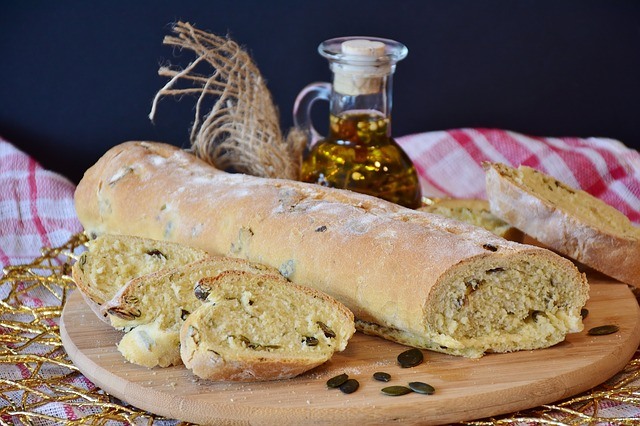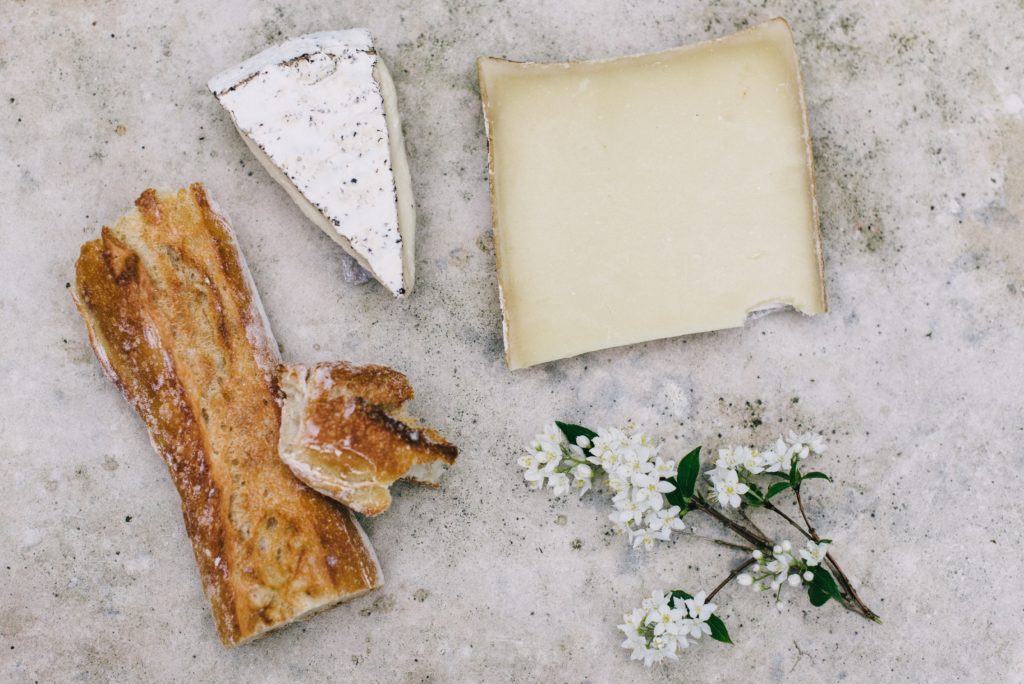What is ciabatta bread, exactly? Ciabatta is a tasteful, delicious bread that brings a touch of Italian air into your kitchen.
Pair it with spiced oil or enjoy it with butter; either way, ciabatta tastes excellent and serves as a great pre-dinner treat for you and any guests you should have to enjoy.
Ciabatta is a touch complex to make – the bread needs a sponge in order to ensure that it remains airy, and that sponge will need to be prepared ahead of the actual bake, preferably the day before you anticipate making your loaf.

Ciabatta dough is quite wet, as well – a loaf can be ruined if you add too much flour. However, with care and thorough attention to detail, you can enjoy homemade ciabatta with little hassle.
This ciabatta bread recipe will provide you the basics to a great loaf, as well as a variation that will allow you to make ciabatta garlic bread, the perfect accessory to a pasta or pizza dish.
Take your time and enjoy the baking process as well as the taste of warm, home-made ciabatta!
How to Make Ciabatta Bread
Ingredients
Sponge
- 1/8 teaspoon active dry yeast
- 2 tablespoons warm water
- 1/3 cup room-temperature water
- 1 cup flour
Bread
- ½ tablespoon active dry yeast
- 2 tablespoons warm milk
- 1 tablespoon olive oil
- 2 cups flour
- 1 teaspoon salt
- 1 tablespoon garlic powder (optional)
Process
You’ll want to begin your bake by making the ciabatta sponge.
To do so, mix 1/8 teaspoon of active dry yeast into warm water, and let the mixture rest for about five minutes – or until it looks milky and thick.
In a separate bowl, combine the room temperature water and flour. Once the yeast mixture has reached the appropriate texture, add it to these other ingredients.

Stir the mixture for roughly four minutes. Once everything looks smooth, let the mixture rest at room temperature for a minimum of half a day.
You can leave the sponge for a full day, if you like, but its shelf life, after that, is quite short.
Once your sponge has rested, you can begin making the ciabatta bread, itself.
Mix together the ½ tablespoon of active dry yeast with the 2 tablespoons of warm milk and let them sit together until the mixture is creamy.
Once the warm milk and yeast mixture has rested, combine it with the sponge and remaining oil and flour.
Add water, if necessary, to adjust the texture of the dough; it should be too wet to hand-knead, but also cohesive.
Here, a stand mixer comes in handy. Move your dough from its original bowl into the bowl of a stand mixer and combine on low speed.
Once the dough has started to come together, add the 1 teaspoon of salt and, if you’re looking to make ciabatta garlic bread, the 1 tablespoon of garlic powder.
Beat the dough for another 3-4 minutes. Then, remove the dough from the mixer and place it in an oiled bowl. Cover with a kitchen towel or with plastic wrap – even a paper towel will do, in a pinch.
The dough should be left to rise at room temperature for an hour and a half, or until it has doubled in size. The dough should not be dry at the end of its rise; instead, it should retain its original stickiness and be quite airy.
While the dough rises, flour and line a large baking sheet with parchment paper. After the hour and a half rise, you’ll want to place the dough on the baking sheet and divide it into two long loaves.

Gently sprinkle flour over the tops of the loaves. Then, cover with a damp paper towel or kitchen towel, and let the loaves rise once again for another two hours – or until they’ve doubled in size.
Towards the end of the two hours, preheat your oven to 425 degrees Fahrenheit. If you have a baking stone for pizza, bring it out and prepare to use it; if not, keep your loaves on the prepared baking sheet.
Once the second rise has finished, place the loaves and their parchment paper on your baking stone, or leave them on your baking tray, uncovered.
Bake the loaves for twenty minutes, just until they begin to grow golden. In order to check for a full bake, remove a loaf after twenty minutes and tap it.
If the loaf doesn’t cave in beneath your grip, and if the crust sounds appropriately crunchy, you’ll have finished your bake. Remove the loaves from the oven and let them cool away from the baking stone or sheet.
Finally, once all of your hard work is done, enjoy your ciabatta loaves with butter or oil.
If you’ve added garlic to your loaf, settle in and pair it with a warm plate of pasta for a meal full of Italian flavor.
The video below shows how to make ciabatta bread with olives.
Do you have any tips for making ciabatta bread?
